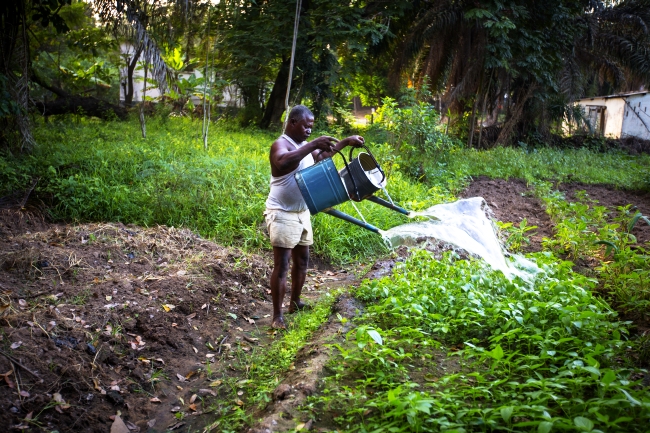New data pool will boost global assessment and monitoring of wastewater and its fate.
As the world urbanises, demands on water resources will skyrocket. Not only will burgeoning cities increase their water use, more and higher quality food will be needed to sate urban appetites.

Millions of farmers are already responding to this new reality by using urban effluents to grow crops in peri-urban areas. Wastewater is a source of water all the year round, rich in nutrients and, if safely used, can be a highly productive resource.
But until recently there was little data on how much municipal wastewater was potentially available or actually used for productive purposes. Now a new addition to the FAO’s AQUASTAT global water information system, in partnership with IWMI and the CGIAR Research Program on Water Land and Ecosystems, seeks to address this gap.
“The aim of this global database is to provide the best available national-level data,” says IWMI’s Javier Mateo- Sagasta, a senior researcher in water quality and safe reuse, who worked closely with FAO to create the AQUASTAT wastewater section. “We are combining information on municipal wastewater production, collection, treatment, discharge or direct use in agriculture.”
In comparison to other existing wastewater and sanitation databases that focus on percentage of sanitation coverage or pollution loads, AQUASTAT focuses on the volume of municipal wastewater. This is to facilitate the integration of these data into the existing water resource and water use accounts in the different countries.
“When we started four years ago there was no recognised global repository for this kind of data,” says Mateo-Sagasta. Since then FAO, and now IWMI, have reviewed data from country briefs, national reports, databases, peer-reviewed publications and information provided by national experts.
“The collaboration has enabled us to add our data to that already held by this influential and freely available online tool. This will undoubtedly both benefit IWMI’s research and be of great use to others. Being accepted by FAO as a reliable partner is an important outcome for us. It is a huge and ongoing undertaking, but well worth it.”
Since data come from many different sources, inconsistencies may occur over the course of time. Therefore, each time new data become available there is a detailed review and validation of all data, both newly obtained and those already available in the database.
You can access the new database, in English, French and Spanish, here
This work was funded by the CGIAR Research Program on Water Land and Ecosystems and FAO AQUASTAT
Contacts:
Karen Frenken, Senior officer, FAO. (Karen.frenken@fao.org )
Javier Mateo-Sagasta, Senior researcher, IWMI (j.mateo-sagasta@cgiar.org )

